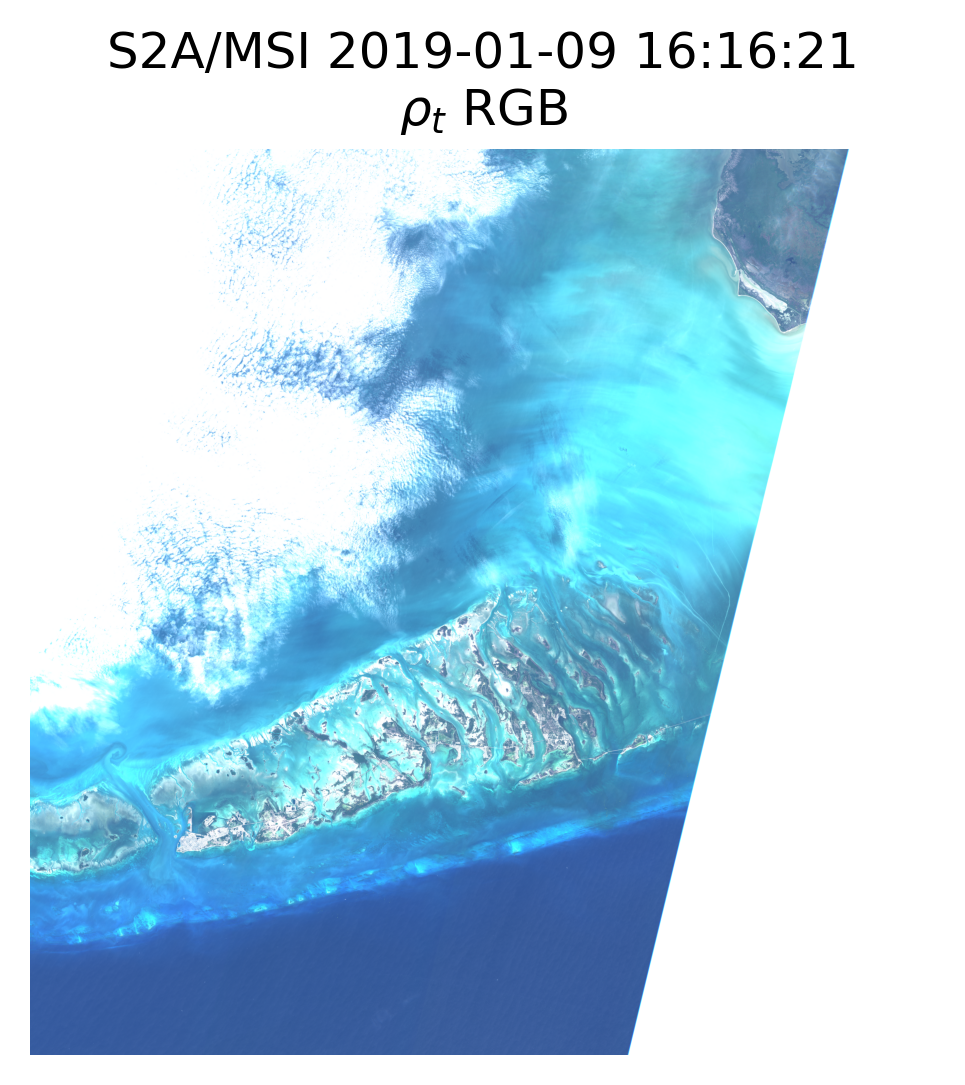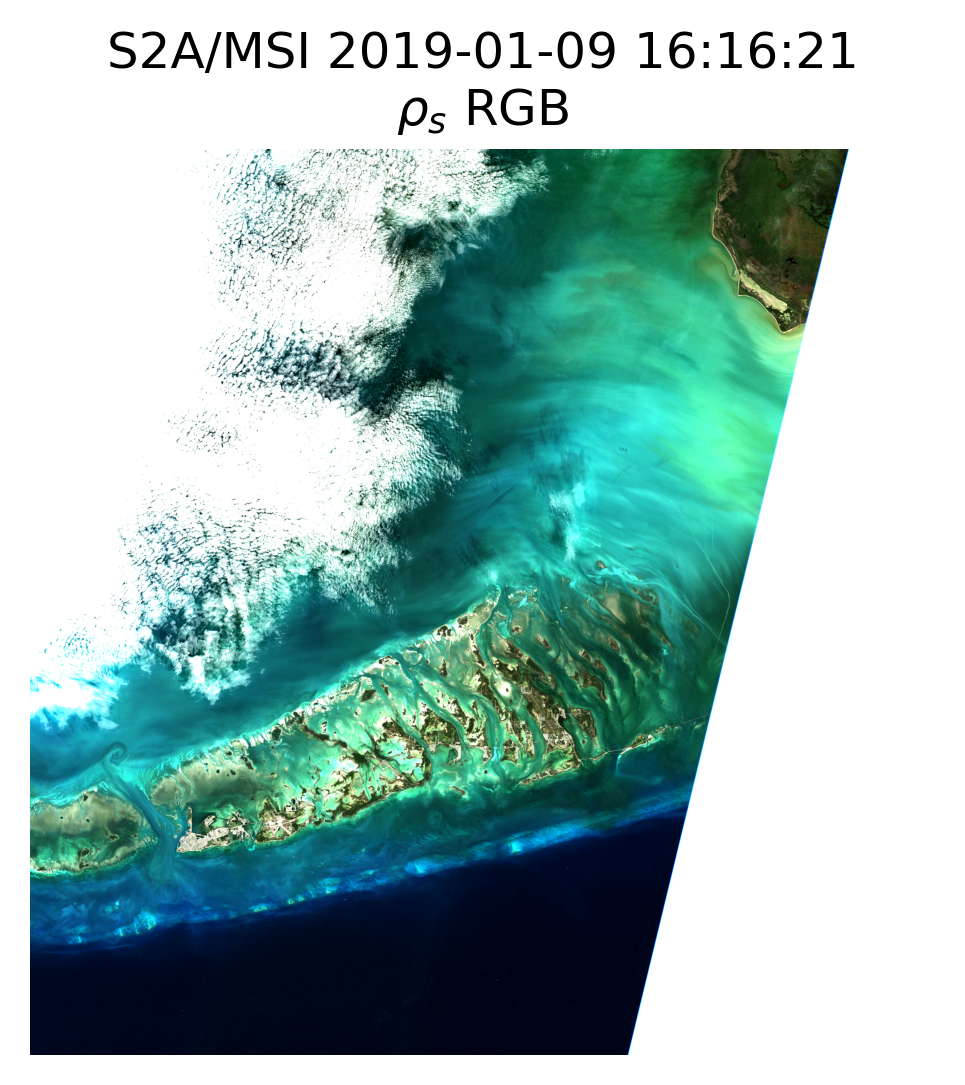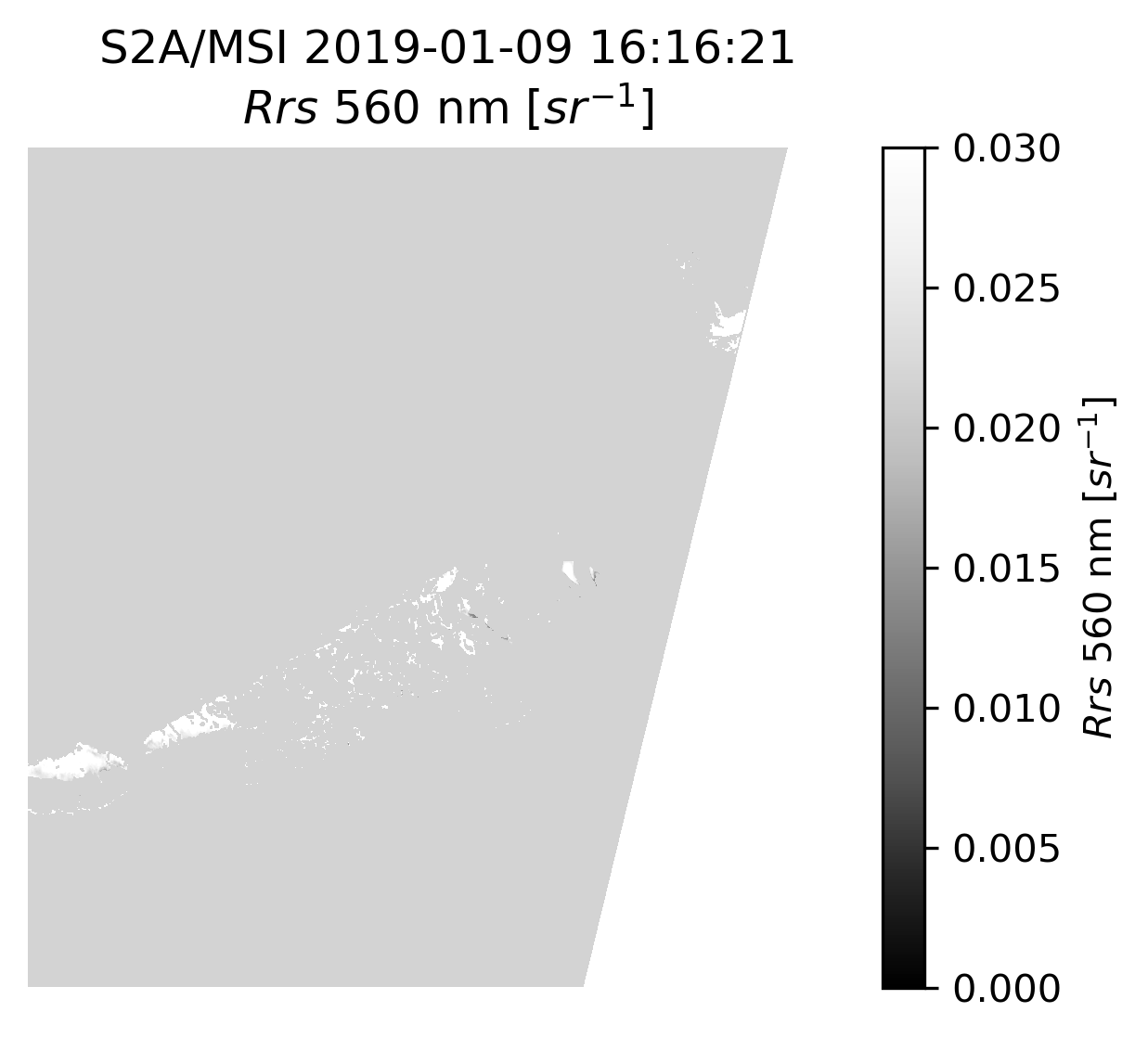Hi Bryan
It is not uncommon for ACOLITE/DSF processing to produce negative reflectance for clearer waters, at the longer wavelength range 650-900 nm. The clear water signal is very low in this spectral range and even small errors in the atmospheric correction may cause the reflectance to become (slightly) negative. The glint correction can further increase the occurrence of negatives in those wavelengths.
If these slight negatives in the red-NIR are no concern to your application you can change the wavelength range of negative masking:
l2w_mask_negative_wave_range=400,650
For your scene the reflectance are only very slightly below zero, and with this setting I get the following results:

- S2A_MSI_2019_01_09_16_16_21_T17RMH_L2R_rgb_rhos.jpg (180.98 KiB) Viewed 122515 times

- S2A_MSI_2019_01_09_16_16_21_T17RMH_L2W_chl_oc3.jpg (123.67 KiB) Viewed 122515 times
You could disable negative masking altogether, but it may be safer to keep the check for negative blue-green bands:
l2w_mask_negative_rhow=False
I should note that there are obvious bottom reflectance problems in the OC3 algorithm outputs here.
I hope this is useful!
Quinten







